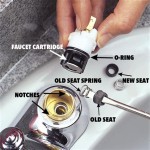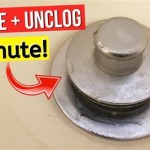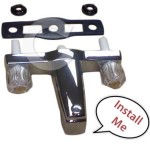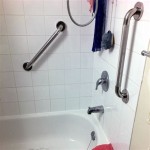How to Measure for an Alcove Bathtub Surround
Installing a new alcove bathtub surround is a common bathroom renovation project that can significantly enhance the aesthetic appeal and functionality of the space. A crucial step in ensuring a successful installation is accurately measuring the alcove where the surround will be fitted. Precise measurements are essential for ordering the correct size surround, preventing costly mistakes, and guaranteeing a professional-looking finish. This article provides a comprehensive guide on how to properly measure for an alcove bathtub surround.
Before commencing the measuring process, it is imperative to gather the necessary tools and equipment. These include a reliable measuring tape (preferably a metal one for accuracy), a level, a pencil or marker, and a notepad to record the measurements. Ensuring the alcove area is clean and free from obstructions is also vital for obtaining accurate readings. Remove any loose items, such as shower curtains, bath mats, or toiletries, that might hinder the measuring process.
Understanding the terminology associated with alcove bathtub surrounds can be helpful. An alcove bathtub is typically enclosed on three sides, with one side open for access. The surround consists of panels that cover the walls of the alcove, providing a waterproof and aesthetically pleasing surface. When measuring, one is determining the dimensions of the space that the surround needs to fill.
Key Point 1: Measuring the Width of the Alcove
The width of the alcove is the distance between the two side walls that enclose the bathtub. Measuring this dimension accurately is paramount because it dictates the size of the surround panels that will be installed on the side walls. Take the measurement at three different points: the top, the middle, and the bottom of the alcove. This is important because walls are not always perfectly straight or plumb.
To take these measurements, start by placing the end of the measuring tape against one side wall at the top of the alcove. Extend the tape across to the opposite wall and record the measurement. Repeat this process at the middle point of the alcove, approximately halfway down the wall height, and then again at the bottom, close to the bathtub itself. Note all three measurements on the notepad.
Analyze the three width measurements. If there are slight variations, which is common, use the largest measurement as the basis for selecting the surround. This ensures that the surround will fit even in the widest part of the alcove. If the variation is significant (more than ¼ inch), it might be necessary to consider adjusting the walls before installing the surround. This could involve adding shims or furring strips to create a more uniform surface. However, for minor discrepancies, most bathtub surrounds can be trimmed to fit.
It is crucial to account for any existing tiles or wall coverings that will remain in place behind the surround. If these add thickness to the walls, include that thickness in the width measurement. Failure to do so could result in a surround that is too narrow to properly fit the alcove.
Key Point 2: Measuring the Height of the Alcove
The height of the alcove is the vertical distance from the top of the bathtub rim to the desired top edge of the surround. This measurement determines the height of the surround panels that will be installed on the side and back walls. Like the width, taking multiple height measurements is essential for accuracy.
Begin by placing the end of the measuring tape on the highest point of the bathtub rim. This is important because the rim might not be perfectly level. Extend the tape vertically upwards to the desired top edge of the surround. The standard height for an alcove bathtub surround is typically around 60 to 72 inches, but this can vary depending on personal preference and bathroom design.
Take height measurements at several points along the back wall and the side walls. Again, walls are rarely perfectly plumb, and the bathtub rim might have slight variations in height. Record each measurement on the notepad. Compare the different height measurements and use the largest measurement as the basis for selecting the surround. This ensures that the surround will be tall enough to cover the entire desired area.
Consider any existing fixtures or obstacles that might affect the height measurement. For example, if there is a window in the alcove, the height measurement should be taken from the bathtub rim to the bottom of the window frame. Similarly, if there is an existing tile border or trim, the height measurement should account for its presence. Subtract any distance that will be behind the top of the alcove.
Ensure that the height measurement allows for sufficient clearance around the showerhead. The showerhead should be positioned so that water sprays into the bathtub and not onto the surround panels. This helps to prevent water damage and mold growth.
Key Point 3: Measuring the Depth of the Bathtub
While not directly related to the surround panels themselves, measuring the depth of the bathtub is important for ensuring compatibility and proper installation of the surround. The depth of the bathtub refers to the distance from the front edge of the tub to the back wall of the alcove. This measurement helps to determine whether the surround panels will properly align with the bathtub rim and provide a secure and watertight seal.
Place the end of the measuring tape against the front edge of the bathtub, where it meets the floor. Extend the tape horizontally back to the back wall of the alcove and record the measurement. Take this measurement at several points along the length of the bathtub, as the front edge might not be perfectly straight. Compare the different measurements and use the largest measurement as the basis for selecting the surround. This helps to ensure that the surround will properly cover the entire back wall of the alcove.
Pay attention to the shape of the bathtub. Some bathtubs have curved or angled front edges, which can affect the overall depth measurement. In such cases, it might be necessary to take multiple measurements at different points along the front edge to accurately assess the depth of the tub.
Consider the thickness of the surround panels when measuring the depth of the bathtub. The panels will add a certain amount of thickness to the back wall, which can affect the available space inside the bathtub. Be sure to account for this thickness when determining the optimal placement of the showerhead and other fixtures.
In instances where the bathtub is not perfectly square or aligned with the alcove walls, it may be necessary to make adjustments to the surround panels during installation. This could involve trimming or shaping the panels to fit the contours of the bathtub.
Furthermore, note the presence of any plumbing fixtures, such as faucets or drainpipes, that might affect the installation of the surround. These fixtures might require cutouts or modifications to the surround panels. Taking detailed measurements of the location and dimensions of these fixtures is crucial for ensuring a proper fit.
Once all measurements have been taken and recorded, it is advisable to double-check them for accuracy. Careful and accurate measurements are the foundation for a successful alcove bathtub surround installation. Errors in measurement can lead to delays, increased costs, and a less-than-satisfactory finished product. Consult with a professional contractor or installer if there are any uncertainties or concerns about the measurement process. Their expertise can help to ensure that the surround is properly fitted and installed, providing a durable and aesthetically pleasing bathroom upgrade.
By understanding the importance of accurate measurements and following these guidelines, one can confidently approach the installation of an alcove bathtub surround, minimizing the risk of errors and ensuring a professional-looking result.

Sterling 5 Ft Left Hand Drain Rectangular Alcove Bathtub With Wall Set And 10 Piece Accessory In White 71171710 0 The Home Depot
How To Measure A Bathtub Standard Tub Sizes Measuring Guide Vevano

American Standard Ovation Curve 60 In W X H 3 Piece Glue Up Alcove Tub Surrounds Arctic White 2961bwt60 011 The Home Depot
How To Measure A Bathtub Standard Tub Sizes Measuring Guide Vevano
How To Measure A Bathtub Standard Tub Sizes Measuring Guide Vevano

American Standard Ovation 32 In X 60 59 5 Piece Glue Up Alcove Bath Wall Set Silver Celestial 2968bwt60 366 The Home Depot

Sterling 5 Ft Left Hand Drain Rectangular Alcove Bathtub With Wall Set And 10 Piece Accessory In White 71171710 0 The Home Depot

The Complete Guide To Installing Tile On Shower Or Bathtub Walls

Acrylic Alcove Bathtub Shower Replacement Innovate Building Solutions

Town Square S 60 X 30 Alcove Tile In Soaking Acrylic Bathtub Small Bathroom With Tub Shower Combo Simple Remodel
Related Posts








